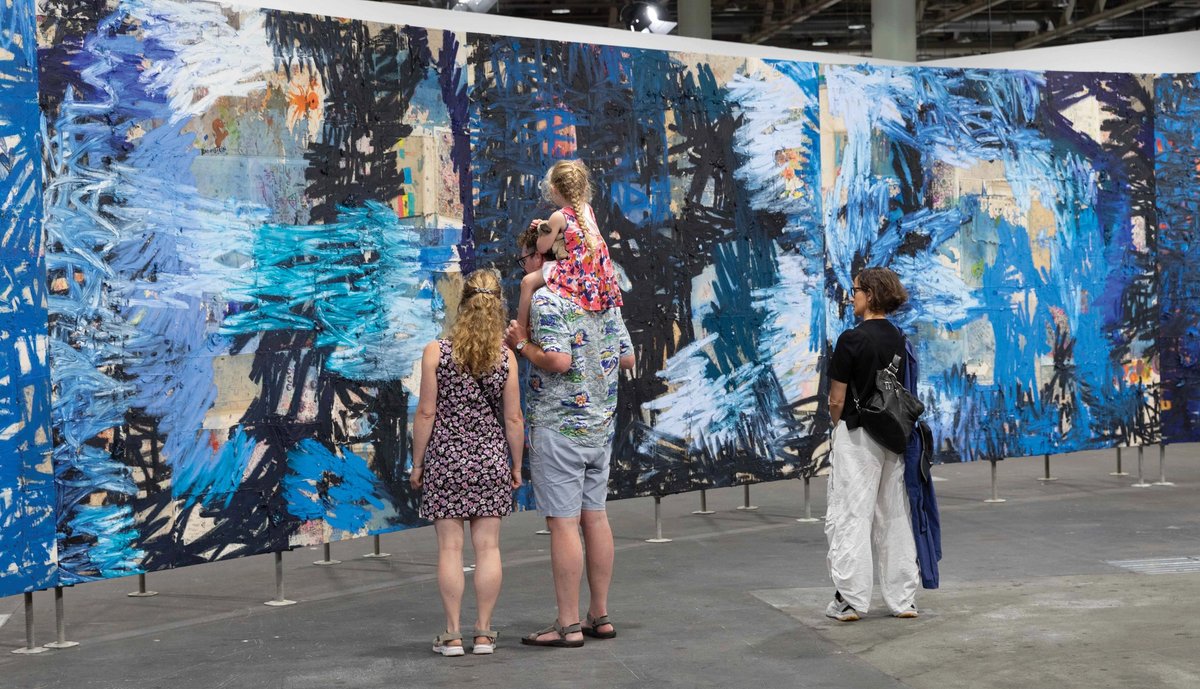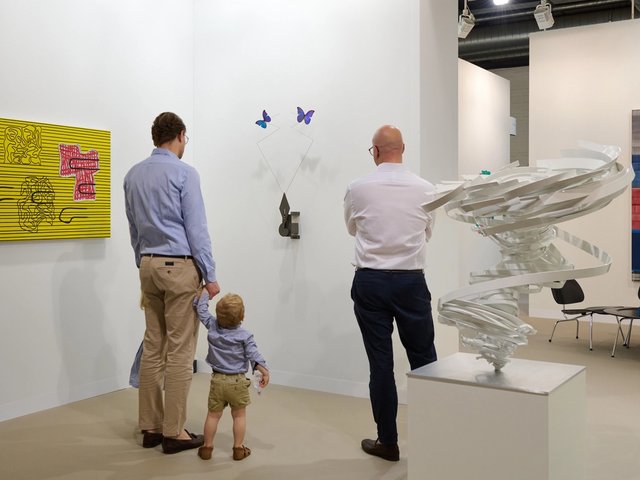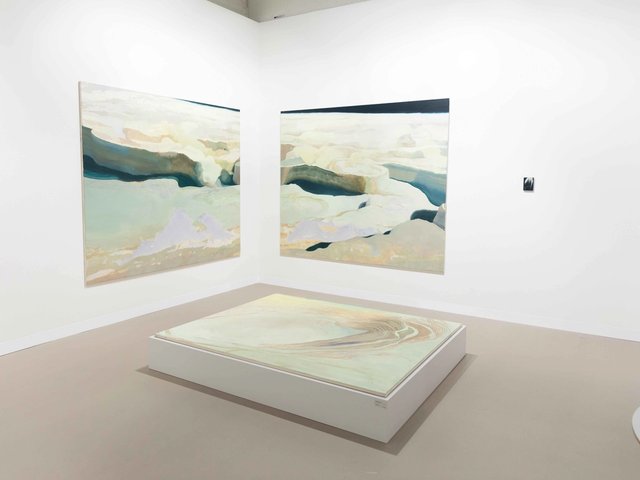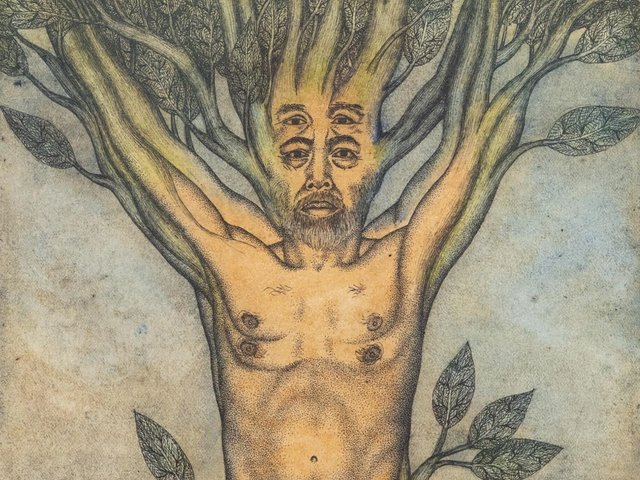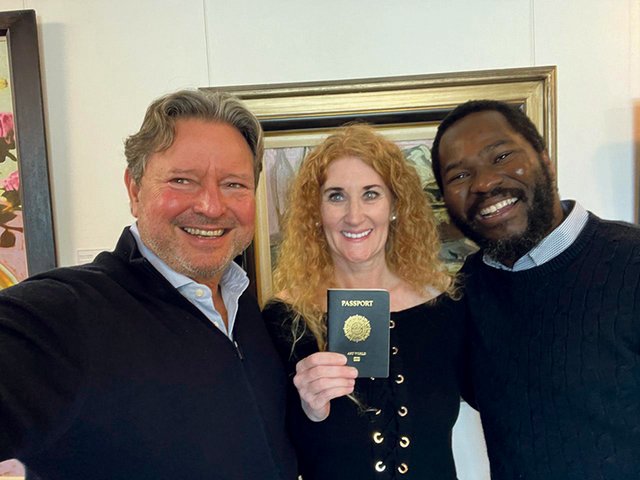Unlimited, the section of Art Basel dedicated to monumental works and performances, is always filled with big ideas. This year, the prevailing mood chimes with our turbulent times, with—in the words of the section’s curator, Giovanni Carmine—themes of “being in sync, utopia, the community, making art” underpinning many exhibits. There is a particular focus on sculpture, which, Carmine explains, “was a challenge. It’s good because it’s open, but it was a bit more difficult in terms of getting our rhythm in the space.” There is also a healthy dose of textile, performance and painting from the 1960s onwards. Here, Carmine picks some of his favourite works.
Oscar Murillo
Masses, disrupted frequencies (Argentina, Colombia, Ghana, Nepal, Malaysia, India, China, Egypt, United States, Morocco, Philippines, Germany, United Kingdom) (2013-23)
Carlos/Ishikawa, Taka Ishii, Kurimanzutto, David Zwirner
“This work (above) is based on a workshop Murillo is doing with children and others in different parts of the world, where they produce drawings that serve as canvases for his painting. It’s amazing: the energy of the kids or teenagers working, these fantastic colours, this sea of blue. Children are the future, so you have to get them involved and show that they can shape life.”
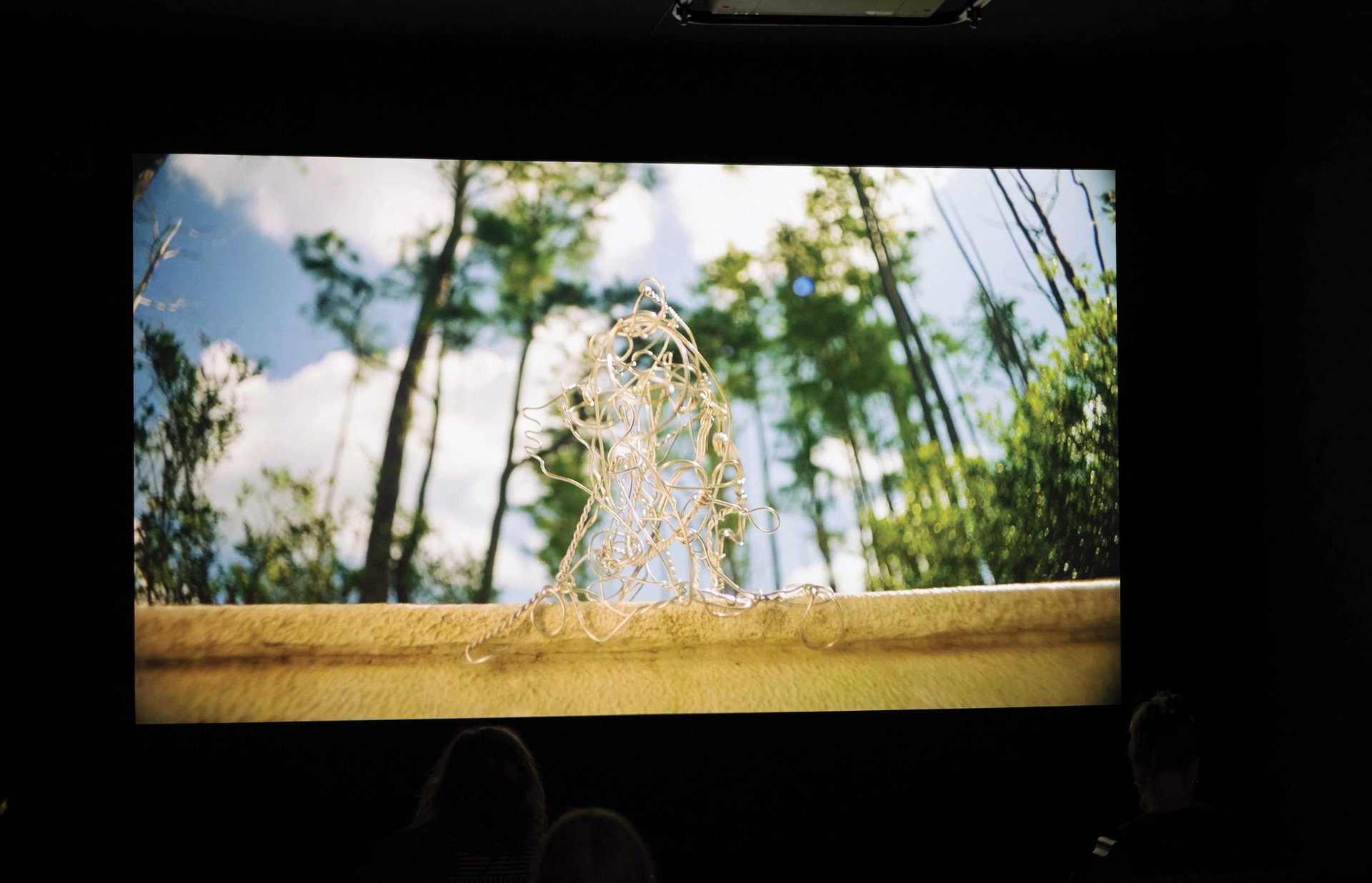
David Owens
Lonnie Holley
I Snuck Off the Slave Ship (2019)
Edel Assanti
“Holley is an important figure in several fields. He is an amazing musician and somebody who is constantly making art. He made this film for Sundance Film Festival. It’s kind of a documentary about his life, practice and being in this community in Georgia in the US. It’s also about being an artist.”

David Owens
Alia Farid
Elsewhere: Cuba (2025)
Sfeir-Semler
“Farid is one of the important artists from the Middle East. These tapestries are dedicated to the migration of people from the Middle East to Cuba and the transnational culture that has emerged. They touch on politics but also on life: a tabbouleh recipe, for example, becomes a kind of hybrid mix between Caribbean and Arab culture.”
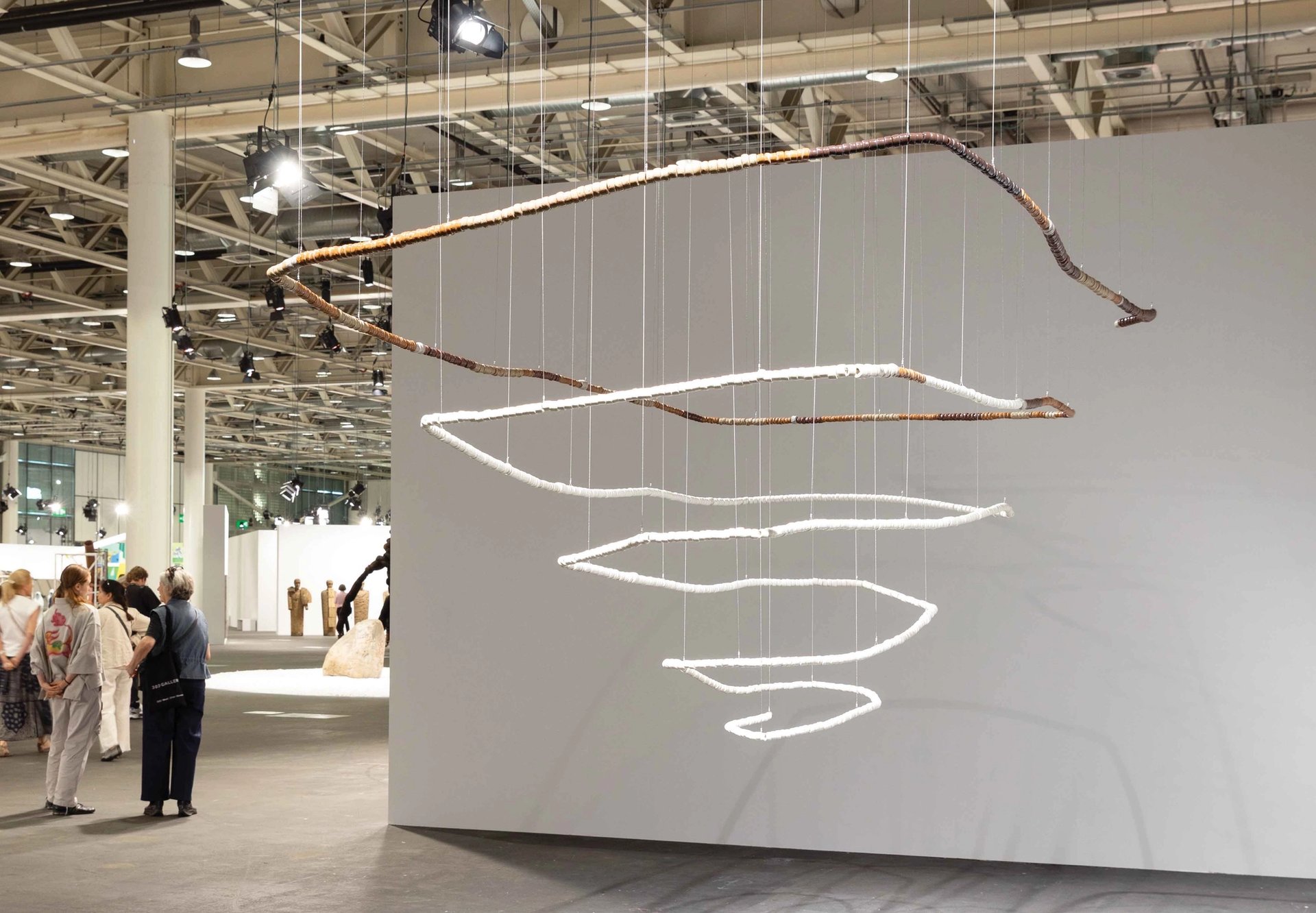
David Owens
Taloi Havini
Beroana (shell money) (2015-25)
Silverlens
“One of the subjects Havini focuses on is a different system of monetary value [used by her ancestors in what is today Bougainville in the south-west Pacific Ocean]. She’s on a residency here at Basel’s ethnographical museum and the piece was produced with Basel’s art school; it’s a work that shows how Unlimited can reach outside.”
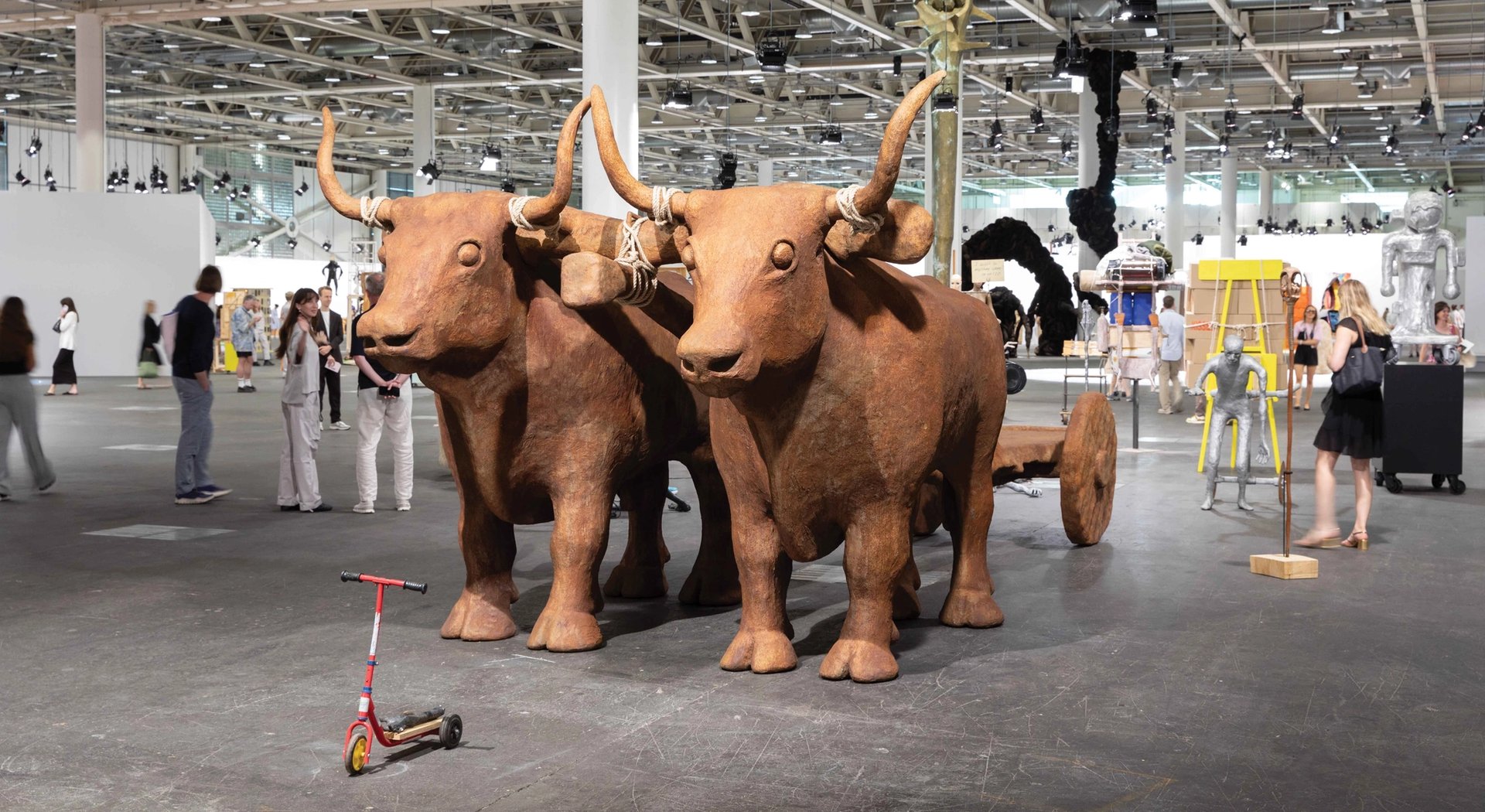
David Owens
Atelier Van Lieshout
The Voyage—A March to Utopia (2025)
Krinzinger, OMR, in collaboration with Jousse Entreprise, Ron Mandos
“This is an incredible piece comprising 160 sculptures. It’s a work that gives us hope for a better future but also shows how the struggle to reach it is painful and there will be people left in the road. It was built in sections over four years: there are people with caravans, an area with the materials needed for the future—such as medicines and food—as well as monuments for the fallen.”
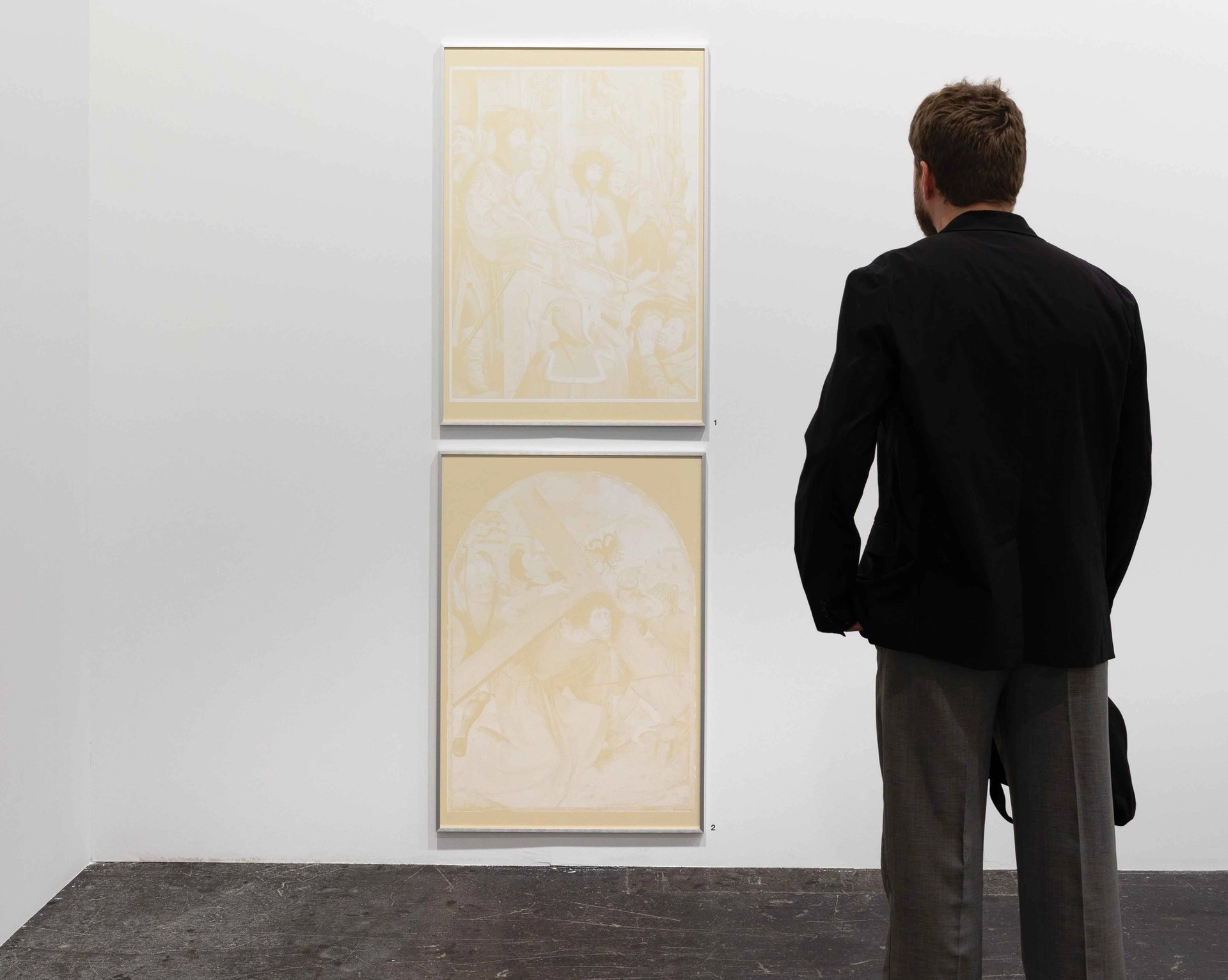
David Owens
Andrea Büttner
Shame Punishments (2022-25)
Hollybush Gardens, David Kordansky, Jan Mot, Tschudi
“Büttner is well-known for her prints and a real artist-researcher. For these silkscreens on paper, she researched iconography relating to shame and punishment; there is the first depiction of crucifixion, public shaming, and a person made to wear donkey ears in school.”
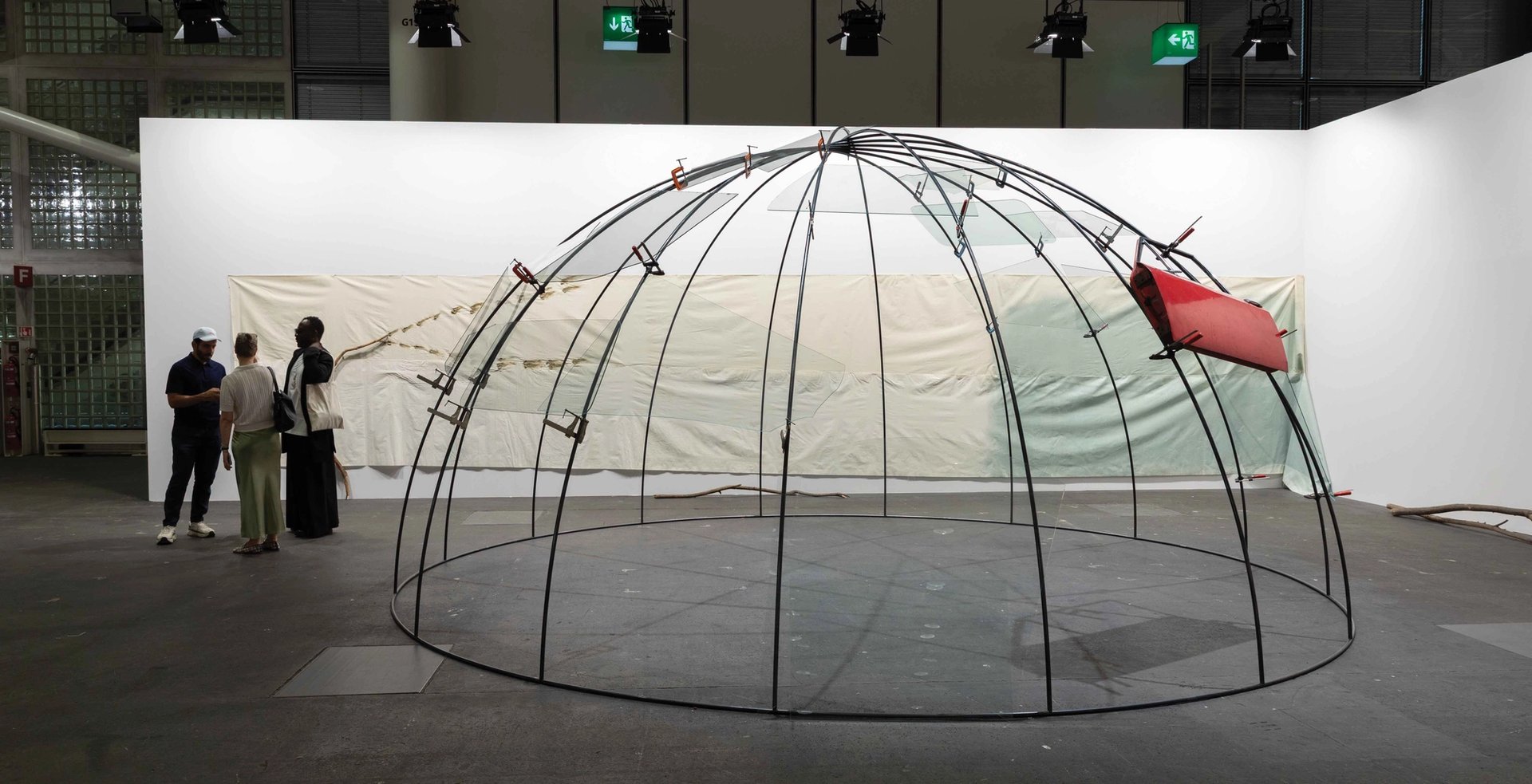
David Owens
Mario Merz
Evidenza di 987 (1978)
Sprovieri, Tucci Russo, Giorgio Persano
“This is the only igloo that Merz conceived that people could get inside. I like the detail of the flying-car doors, because he makes it on one side a little bit Pop art but also connected to Turin, which was the city of car-making in Italy [and a centre of Arte Povera].”


